Niaccaba is a monotypic moth genus of the family Noctuidae first described by Francis Walker in 1866. Its single species, Niaccaba sumptualis, described by the same author one year earlier, is found in Sri Lanka, the Ryukyu Islands and Borneo.

Ozola is a genus of moths in the family Geometridae first described by Francis Walker in 1861.

Thalassodes is a genus of moths in the family Geometridae first described by Achille Guenée in 1857.

Orothalassodes falsaria is a species of moth of the family Geometridae. It is found in north-eastern India, Sri Lanka, China, Peninsular Malaysia, Sumatra, Borneo, Java and Bali. Records from Taiwan are misidentifications of Orothalassodes pervulgatus.
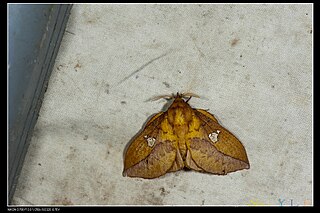
Euthrix laeta is a moth of the family Lasiocampidae first described by Francis Walker in 1855.

Kunugia latipennis, the pine lappet moth, is a moth of the family Lasiocampidae. The species was first described by Francis Walker in 1855.
Artaxa digramma is a moth of the family Erebidae first described by Jean Baptiste Boisduval in 1844. It is found in India, Sri Lanka, Myanmar, Nepal, Java, Borneo, and recently from China.
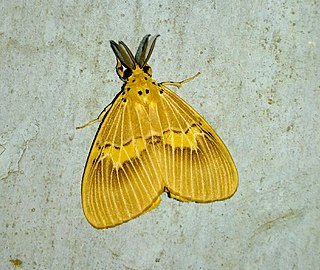
Cispia punctifascia is a moth of the family Erebidae first described by Francis Walker in 1855. It is found in India, Sri Lanka, Sumatra, Borneo and originated in Malaysia.

Perina nuda, the clearwing tussock moth or banyan tussock moth, is a moth of the family Erebidae. The species was first described by Johan Christian Fabricius in 1787. It is found in the Indian subregion, Sri Lanka, to southern China Hong Kong, Thailand and Sundaland.
Laelia suffusa is a moth of the family Erebidae first described by George Hampson in 1893. It is found in Bangladesh, Sri Lanka, Java, East Indies, Sundaland, the Philippines and Sulawesi.
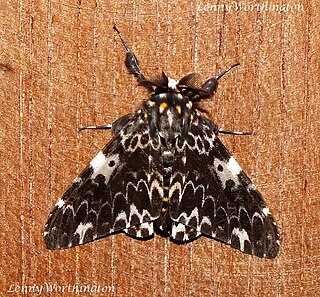
Lymantria marginata is a moth of the family Erebidae first described by Francis Walker in 1855. It is found in India, Bangladesh, Sri Lanka and Thailand.
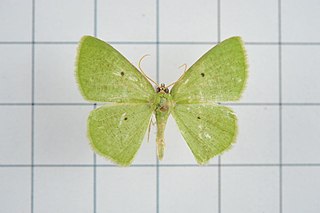
Aplochlora vivilaca is a moth of the family Geometridae first described by Francis Walker in 1861. It is found in Sri Lanka, Indian subregion, Taiwan, Borneo and Sulawesi.

Celenna festivaria is a moth of the family Geometridae first described by Johan Christian Fabricius in 1794. It is found in India, Sri Lanka, Myanmar, Borneo, Java Taiwan, the Ryukyu Islands and Luzon in the Philippines.
Pelagodes clarifimbria is a moth of the family Geometridae first described by Prout in 1919. It is found in Sri Lanka, Peninsular Malaysia and Borneo.
Thalassodes veraria, is a moth of the family Geometridae first described by Achille Guenée in 1858. It is found in Sri Lanka, Fiji, India, Java, Malaysia, New Guinea and Australia.
Ctenoplusia fracta is a moth of the family Noctuidae first described by Francis Walker in 1858.
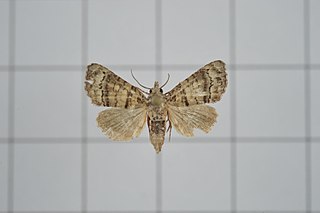
Chlumetia transversa, the mango shoot borer, is a moth of the family Euteliidae. The species was first described by Francis Walker in 1863. It is a widely distributed across Indo-Australian tropical countries far east to Solomon Islands.
Penicillaria lineatrix is a moth of the family Noctuidae first described by Francis Walker in 1858. It is found in India and Sri Lanka.
Callopistria apicalis is a moth of the family Noctuidae first described by Francis Walker in 1855. It is found in the Indian subregion, Sri Lanka, Sundaland and the Philippines.
Callopistria thalpophiloides is a moth of the family Noctuidae first described by Francis Walker in 1862. It is found in the Indian subregion, Sri Lanka, Sundaland, China, Taiwan, Philippines, Sulawesi and New Guinea.











